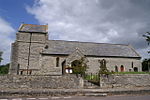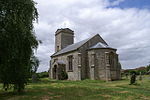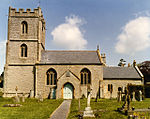The Monmouth Rebellion, also known as the Pitchfork Rebellion, the Revolt of the West or the West Country rebellion, was an attempt to depose James II, who in February 1685 succeeded his brother Charles II as king of England, Scotland and Ireland. A group of dissident Protestants led by James Scott, 1st Duke of Monmouth, eldest illegitimate son of Charles II, opposed James largely due to his Catholicism.
The failure of Parliamentary efforts to exclude James from the succession in 1681 resulted in the 1683 Rye House Plot to assassinate Charles II and James; although Monmouth was then in exile in the Dutch Republic, he was identified as a co-conspirator. His rebellion was coordinated with a simultaneous rising in Scotland, led by Archibald Campbell, 9th Earl of Argyll.
On 11 June 1685, Monmouth landed at Lyme Regis in South West England where he had widespread popular support, planning to take control of the area and march on London. In the next few weeks, his growing army of nonconformists, artisans and farm workers fought a series of skirmishes with local militias and regular soldiers commanded by Louis de Duras, 2nd Earl of Feversham, and John Churchill. However, his recruits were unable to compete with the regular army and failed to capture the city of Bristol. The rebellion ended with his defeat at the Battle of Sedgemoor on 6 July 1685 by a government army commanded by Feversham and Churchill.
Monmouth was beheaded for treason on 15 July 1685. Many of his supporters were tried during the Bloody Assizes, led by Judge Jeffreys, and were condemned to death or transportation. James II consolidated his power and reigned until 1688, when he was deposed by another nephew, William III of Orange, in the Glorious Revolution.










